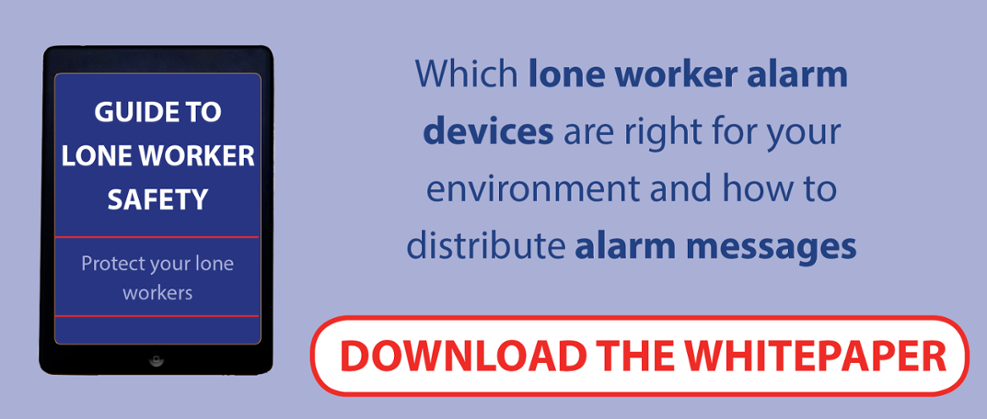
According to the definition from the Health and Safety Executive, a “lone worker” is defined as anyone who works alone without close or direct supervision. Inherently, the nature of some of this work can lead to lone worker hazards and issues relating to the health and safety of lone working. Working alone is not against the law, and there are a significant number of lone workers in the UK. Recent estimates reveal that there are up to 8 million which is 22% of the UK working population. It is often safe to do so as long as the risks are understood and the necessary safeguards are in place. Employers must ensure they take responsibility for the health, safety and general well-being of all their workers. They also need to ensure health and safety laws for their specific industries are implemented regarding their lone workers.
Jobs Lone Workers Do
This can encompass many job roles and even working remotely, or interacting with people outside their own organizations such as customers or the general public. The term can be relevant to employees working in any industry, from social work to utilities, from agriculture to postal / delivery services, to construction and more. This can present situations where the lone worker can be at risk such as threatening or aggressive behaviour from members of the public.
Statistics from the British Crime Survey indicate that as many as 150 lone workers are attacked every day. This statistic includes both physical and verbal attacks. In this article, we examine some techniques to counter-act lone worker hazards.
Problems Affecting Lone Workers
Lone workers should not be at more risk than other employees. The health and safety of lone working should be given as much importance as that of other employees. Health and Safety Managers should take adequate steps to make sure that lone worker hazards are assessed and the appropriate training and advice regarding their lone workers is readily available.
Lara Wilks Sloan from the Suzy Lamplugh Trust says: "When we train lone or frontline workers we spend time looking at the risks associated with the people they meet, the environments they go into and the task they do. It’s a useful exercise and usually generates a long list in 5 minutes."
Lone workers will face the same risks as other workers but can be increased from:
- Fire
- Theft / intruders
- Emergencies / sudden illness
- Driving related risks
- Lack of supervision and training
- Violence and intimidation from members of the public
There is guidance that clearly states employers are required to consult their workforce on health and safety matters. It is good practice for employees and their Health and Safety Managers as well as Team Managers to have access to all material related to health and safety
Importance of Training for Lone Workers
Training is an important aspect since there can be limited guidance and supervision in unpredictable and tense situations.
Lara Wilks Sloan explains that the idea of the training is to make lone and frontline workers feel confident that they know what to do should a situation arise. "If you can embed a good culture of personal safety when working and can simplify it down to some top line principles – someone always knows where I am, I know how to raise the alarm, I have an exit strategy (for example) - then personal safety really takes care of itself. Not investing in training is false economy – get it right up front, refresh it periodically and keep it live."
It's important to know that there are also personal safety systems available. This is one of the most effective ways of protecting lone workers and is the first choice for many employers in mitigating lone worker hazards. Personal safety products come in a variety of shapes and forms and can be disguised as items deemed necessary for employees to carry out their work. Alarms are distributed to colleagues that can help or an Alarm Receiving Centre manned by trained operators around the clock.
Verbal De-Escalation Techniques
As discussed previously, many job roles rely on employees interacting with people out of their own company. Therefore, a common lone worker hazard is the potential for workplace violence occurring. It is important that in these situations, employees, especially in the fields of social work, home health care and utilities, are able to utilise de-escalation techniques to prevent a serious situation becoming more dangerous whilst waiting for help to come.
In such scenarios, the most common de-escalation technique is verbal communication. We will discuss effective verbal de-escalation methods in more detail.
Misunderstanding
Lara explains that most issues come down to communication problems, a lack of information or understanding which leads to frustration and misunderstanding. It is important to identify misunderstanding where this has occurred and rectify the mistake.
Feelings
Once an employee recognises that the person they’re interacting with is becoming more heated, they should consider aspects that may have led to the individual becoming more agitated. Agitated or irate individuals tend to talk about facts that caused their anger. This is an ideal opportunity to direct the conversation and divert focus to the person’s feelings. Consider a salesman trying to sell a product to a potential first time customer. The best sales people are those that have the ability to connect and build rapport to close the final sale rather than bombarding the customer with cold hard facts.
Empathy and Care
In a similar vein, an employee connecting on a personal level with an angry individual by asking open ended questions and about their feelings can certainly defuse a potentially hazardous situation. The employee should express empathy and show they care to understand why the person may be upset. The discussion should be kept to the present as someone who is angry may bring up instances from the past where they feel they have been wronged. This can lead to the situation escalating. The employee should still take time to listen but be assertive by redirecting issues to the current situation since this can be addressed and any necessary action taken. This can be achieved by asking clarifying questions and relaying a summary back to the individual. Furthermore, by allowing periods of silence, both parties can reflect on the issue and think rationally before the situation escalates.
Conclusion
We have identified what lone workers are and which jobs and industries they are involved in. We have also found that there is a significant number of lone workers in the UK today who are potentially at risk from workplace violence. There are effective methods of verbal de-escalation which are particularly useful for lone workers who have to deal with members of the public.





